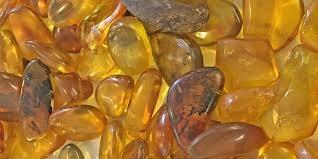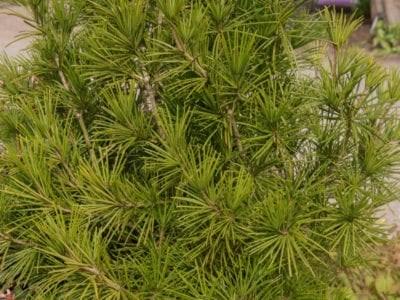
5 minute read
Revealing Meat and Fish Fraud with a in SecondsHandheld MasSpec Pen
From the ACS Press Room Revealing Meat and Fish Fraud with a Handheld ‘MasSpec Pen’ in Seconds
“Rapid Analysis and Authentication of Meat Using the MasSpec Pen Technology”
Advertisement
Journal of Agricultural and Food Chemistry
Meat and fish fraud are global problems, costing consumers billions of dollars every year. On top of that, mislabeling products can cause problems for people with allergies, religious or cultural restrictions. Current methods to detect this fraud, while accurate, are slower than inspectors would like. Now, researchers reporting in ACS’ Journal of Agricultural and Food Chemistry have optimized their handheld MasSpec Pen to identify common types of meat and fish within 15 seconds. News stories of food fraud, such as beef being replaced with horse meat, and cheaper fish being branded as premium fillets, have led people to question if what is on the label is actually in the package. To combat food adulteration, the U.S. Department of Agriculture conducts regular, random inspections of these products. Although current molecular techniques, such as the polymerase chain reaction (PCR), are highly accurate, these analyses can take hours to days, and are often performed at offsite labs. Previous studies have devised more direct and on-site food analysis methods with mass spectrometry, using the amounts of molecular components to verify meat sources, but they also destroyed samples during the process or required sample preparation steps. More recently, Livia Eberlin and colleagues developed the MasSpec Pen — a handheld device that gently extracts compounds from a material’s surface within seconds and then analyzes them on a mass spectrometer. So, the team wanted to see whether this device could rapidly and effectively detect meat and fish fraud in pure filets and ground products. The researchers used the MasSpec Pen to examine the molecular composition of grainfed and grass-fed beef, chicken, pork, lamb, venison and five common fish species collected from grocery stores. Once the device’s tip was pressed against a sample, a 20-µL droplet of solvent was released, extracting sufficient amounts of molecules within three seconds for accurate analysis by mass spectrometry. The whole process took 15 seconds, required no preprocessing, and the liquid extraction did not harm the samples’ surfaces. Then the team developed authentication models using the unique patterns of the molecules identified, including carnosine, anserine, succinic acid, xanthine and taurine, to distinguish pure meat types from each other, beef based on feeding habit and among the
Continued on page 19
From the ACS Press Room Paleopharmaceuticals from Baltic Amber might Fight Drug-resistant Infections
This research was presented at a meeting of the American Chemical Society.
WASHINGTON, April 5, 2021 — For centuries, people in Baltic nations have used ancient amber for medicinal purposes. Even today, infants are given amber necklaces that they chew to relieve teething pain, and people put pulverized amber in elixirs and ointments for its purported anti-inflammatory and anti-infective properties. Now, scientists have pinpointed compounds that help explain Baltic amber’s therapeutic effects and that could lead to new medicines to combat antibiotic-resistant infections. Each year in the U.S., at least 2.8 million people get antibioticresistant infections, leading to 35,000 deaths, according to the U.S. Centers for Disease Control and Prevention. “We knew from previous research that there were substances in Baltic amber that might lead to new antibiotics, but they had not been systematically explored,” says Elizabeth Ambrose, Ph.D., who is the principal investigator of the project. “We have now extracted and identified several compounds in Baltic amber that show activity against grampositive, antibiotic-resistant bacteria.”The researchers will present their results today at

the spring meeting of the American Chemical Society (ACS). ACS Spring 2021 is being held online April 5-30. Live sessions will be hosted April 5-16, and on-demand and networking content will continue through April 30. The meeting features nearly 9,000 presentations on a wide range of science topics. Ambrose’s interest originally stemmed from her Baltic heritage. While visiting family in Lithuania, she collected amber samples and heard stories about their medicinal uses. The Baltic Sea region contains the world’s largest deposit of the material, which is fossilized resin formed about 44 million years ago. The resin oozed from now-extinct pines in the Sciadopityaceae family and acted as a defense against microorganisms such as bacteria and fungi, as well as herbivorous insects that would become trapped in the resin. Ambrose and graduate student Connor McDermott, who are at the University of Minnesota, analyzed commercially available Baltic amber samples, in addition to some that Ambrose had collected. “One major challenge was preparing a homogeneous fine powder from the amber pebbles that could be extracted with solvents,” McDermott ex-
From the ACS Press Room
plains. He used a tabletop jar rolling mill, in which the jar is filled with ceramic beads and amber pebbles and rotated on its side. Through trial and error, he determined the correct ratio of beads to pebbles to yield a semi-fine powder. Then, using various combinations of solvents and techniques, he filtered, concentrated and analyzed the amber powder extracts by gas chromatography-mass spectrometry (GC-MS). Dozens of compounds were identified from the GC-MS spectra. The most interesting were abietic acid, dehydroabietic acid and palustric acid — 20-carbon, three-ringed organic compounds with known biological activity. Because these compounds are difficult to purify, the researchers bought pure samples and sent them to a company that tested their activity against nine bacterial species, some of which are known to be antibiotic resistant. “The most important finding is that these compounds are active against grampositive bacteria, such as certain Staphylococcus aureus strains, but not gramnegative bacteria,” McDermott says. Grampositive bacteria have a less complex cell wall than gram-negative bacteria. “This implies that the composition of the bacterial membrane is important for the activity of the compounds,” he says. McDermott also obtained a Japanese umbrella pine, the closest living species to the trees that produced the resin that became Baltic amber. He extracted resin from the needles and stem and identified sclarene, a molecule present in the extracts that could theoretically undergo chemical transformations to produce the bioactive compounds the researchers found in Baltic amber samples. “We are excited to move forward with these results,” Ambrose says. “Abietic acids and their derivatives are potentially an untapped source of new medicines, especially for treating infections caused by gram-positive bacteria, which are increasingly becoming resistant to known antibiotics.” The researchers acknowledge support and funding from the University of Minnesota Engebretson Drug Design and Development Grant and the Office of the Vice President for Research Grant-in-Aid of Research, Artistry, and Scholarship Program.










